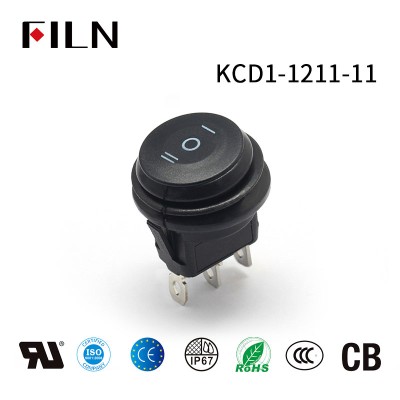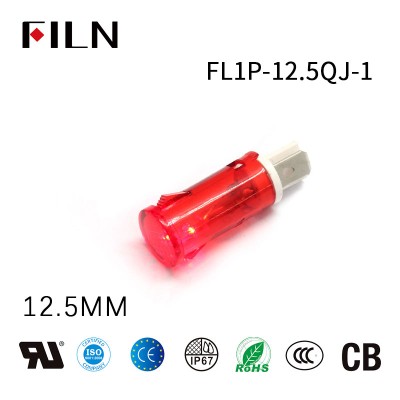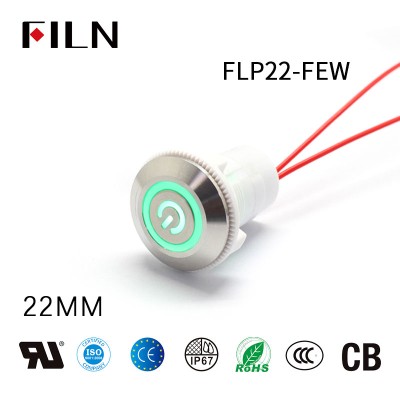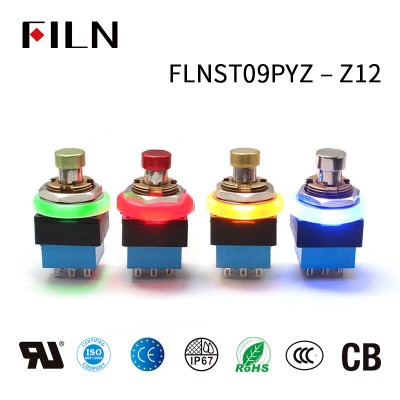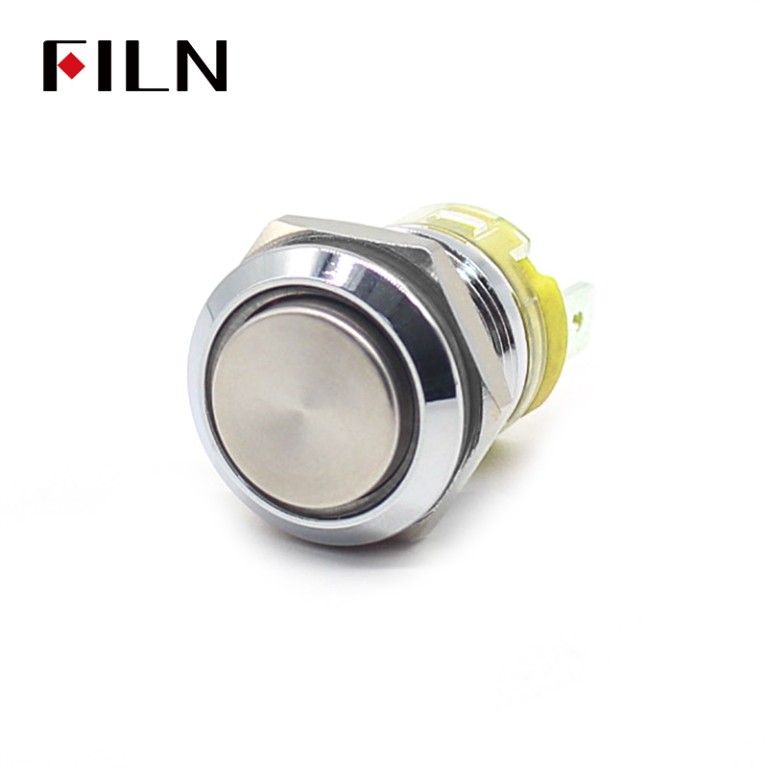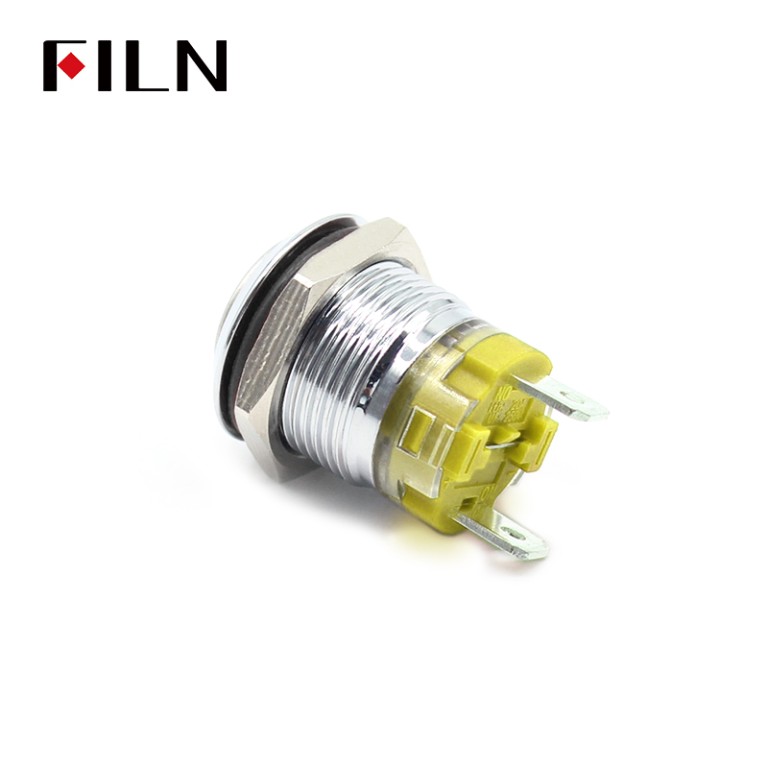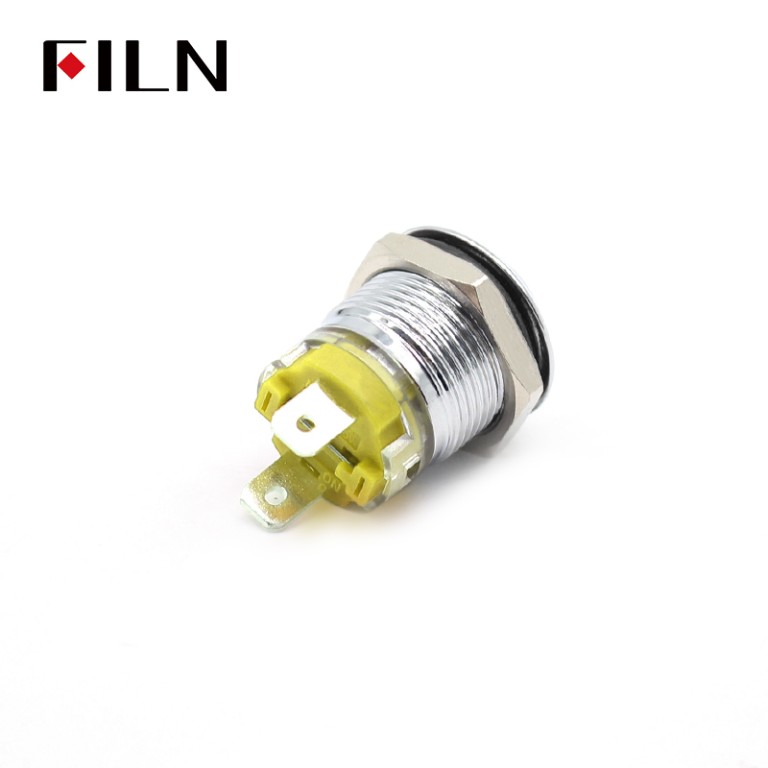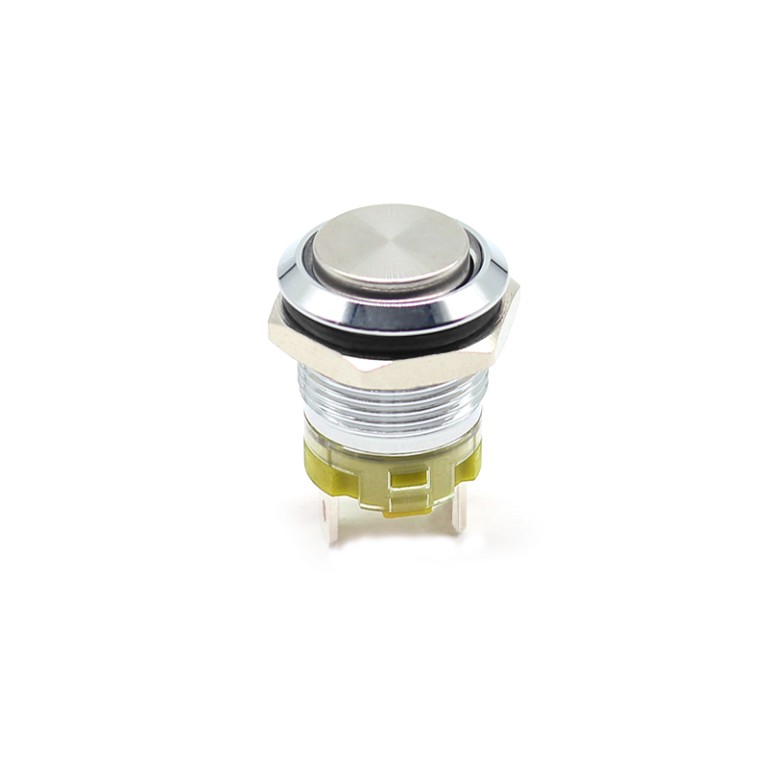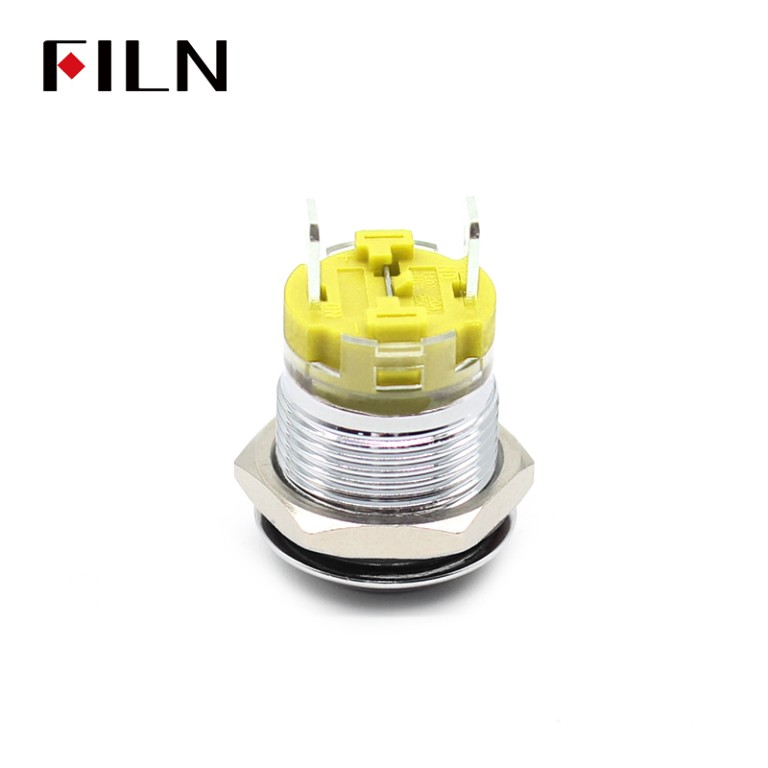Product Drawings:
Comprehensive Guide to Push Button Off Switches
- Name:Push Button Off
- Model:GQB16
- Head Type:High Head
- Size:16mm
- Switching Functions:Latching
- Contact Configuration:1NO
- Rated Voltage: 3mA~15A
- Voltage Options:12V-250V /DC
- Material:ABS plastic, Plastic
- Download Certification:CE, CCC, ROSH, UL
- Email:inquiry@cnylin.com.cn

Product Parameters:
| Product Name | GQB16 |
| Operation Type | Latching |
| Light Voltage | DC 12V |
| Contact Type | 1NO |
| Material | Plastic |
| Mounting Hole Dia. | 16mm |
| Included Components | Micro Switch (optional, not included) |
How to wire a Push Button Off with led?
Generally speaking, a typical wiring process involves connecting the switch’s terminals to the power source and the load. To elaborate, the following steps are commonly taken:
- Disconnect Power: Always ensure to turn off and disconnect the power source before starting any wiring work to prevent accidents.
- Identify Terminals: Examine the switch for the marked terminals. Commonly, you’ll find COM (common), NO (normally open), and NC (normally closed) terminals.
- Prepare Wires: Strip the insulation off the wire tips that will be connected to the switch terminals.
- Connect to Power: Connect the live wire from the power source to the COM terminal.
- Connect to Load: The NO or NC terminal will be connected to the load, based on whether you need the switch to be ‘off’ or ‘on’ by default.
- Additional Connections: In some cases, you might have to wire additional components like LEDs or resistors. This depends on the type of flush push button switch you are using.
- Testing: After all the connections are made, re-connect the power supply and test the switch’s functionality to ensure proper wiring.
- Secure the Wiring: Use electrical tape or wire nuts to secure all the connections.
- Reassemble: Close the panel or housing where the switch is installed.
- Final Testing: Turn the power back on and test the switch again to confirm it’s working as expected.
For a step-by-step guide on how to wire a flush push button switch, you can refer to this article.
Video of other button switch wiring
Customization Advantages of FILN push button off
The FILN push button off is a versatile product that can be customized according to the needs of different customers. This flexibility opens up an array of advantages for users, making it a sought-after component in various applications.
Why Customization is Important for push button off ?
Customization is not just a luxury but a necessity in the ever-competitive market. Manufacturers are under constant pressure to provide products that meet specific customer needs. In the case of the FILN push button off, customization has a significant impact in terms of functionality, aesthetics, and adaptability.
- Industry requirements differ: Different sectors have different requirements for push button switches. For example, the medical industry might require switches that are easily sterilizable, while the automotive industry may need switches that can withstand harsh conditions.
- Consumer Preferences: End-users may prefer specific symbols or lights that make the switches easier to use or identify, enhancing the user experience.
- Technological Advances: As technology progresses, the requirement for switches also changes. Customization ensures that the product remains relevant.
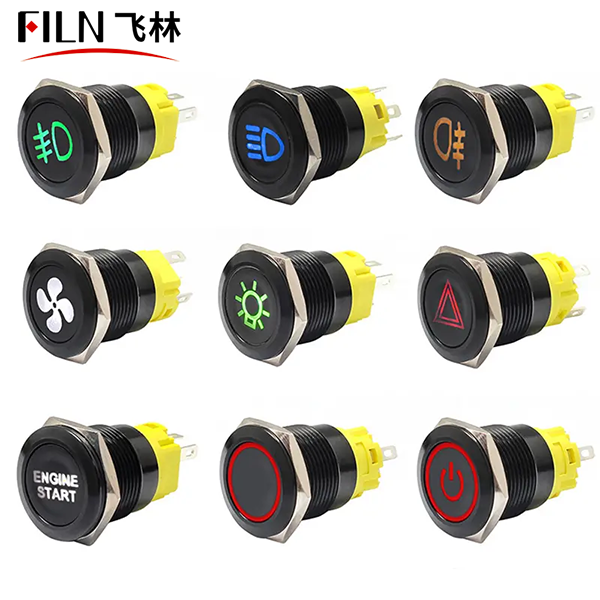
Customizable Button Symbols
One of the most prominent features that can be customized in a FILN push button off is the button symbol. Customers can opt for various light symbols depending on their specific needs.
- User Experience: A customized symbol can dramatically improve user experience by providing easy identification of the button’s function.
- Branding: Companies can also opt for symbols that align with their brand identity, ensuring consistency in product design.
- Regulatory Compliance: In some industries, there are specific symbols that are required by law to ensure safety and compliance.
Customizable Voltage Options
Another crucial aspect of customization is the voltage of the push button switch. FILN offers various voltage options, such as 110v push button switches, to cater to the varied needs of customers.
- Geographic Requirements: Different countries have different standard voltages. Custom voltage options allow for the global distribution of products.
- Device Compatibility: Customizable voltage ensures that the switches can be easily integrated into different systems without requiring additional components.
- Energy Efficiency: The ability to customize voltage can help in creating energy-efficient systems.
FILN’s commitment to customization offers not just product variety but also competitive advantage. Whether it’s custom symbols, voltages, or connectors, the push button off can be tailored to meet the unique demands of your project, making it a smart choice for a multitude of applications.
Related products:
Table of Contents
1.What is a Push Button Off Switch and How Does it Work?
A Push Button Off Switch is a simple electronic component that controls the flow of electricity within a circuit. You press the button to break the circuit, turning off whatever device it controls. These switches are commonly used in various applications, from consumer electronics to industrial machines. There are various types of push button switches, including momentary and latching switches. The former reverts to its original state after the button is released, while the latter remains in its altered state until pressed again. For further insights into what a push button switch is, you can visit here.
- Consumer Perspective: Push button off switches are highly intuitive and easy to use, which is why they are commonly found in household appliances.
- Industrial Perspective: In industrial settings, these switches are usually hard-wearing and can withstand heavy-duty usage.
- Electrical Engineering Perspective: From an electrical standpoint, the push button off switch acts as a simple mechanism to interrupt electrical flow.
2.What are the Different Types of Push Button Off Switches?
Push button switches come in various shapes, sizes, and functionalities. Depending on the application, you might need a different type of switch. Some popular types are:
- 12V Push Button On/Off Switch: Mostly used in car appliances or small DIY projects.
- Waterproof Push Button On/Off Switch: Ideal for outdoor and marine applications.
- Push Button On/Off Switch with LED: These switches have a built-in LED to indicate the status of the switch.
For a comprehensive list of push button switches, check here.
3.How to Wire a Push Button Off Switch?
Wiring a push button off switch can be a straightforward task, but caution is needed due to the involvement of electricity. Understanding the push button on-off switch diagram is essential before you start the installation. It would help to read through this guide on wiring a push button switch for step-by-step instructions.
- DIY Enthusiast’s View: With a simple diagram and the right tools, wiring these switches can be an easy task.
- Electrician’s View: A certified electrician would suggest ensuring that the power supply is off before starting the wiring process.
- Safety Expert’s View: Regardless of expertise, always follow safety guidelines to prevent any electrical hazards.
4.How to Connect a Push Button Off Switch?
Connecting a push button off switch involves hooking it up to the device or machinery you want to control. The switch usually comes with two or more terminals which must be connected to the power source and the device.
- Beginner’s Perspective: For someone new to electronics, it’s advisable to follow a guide for the connection, such as this one.
- Professional’s Perspective: For an electrician, the process might be straightforward, but it’s still crucial to test the connection before finalizing it.
- Quality Checker’s View: Once connected, it’s important to ensure the connections are tight and secure to avoid any malfunction.
5.What are the Industrial Applications of a Push Button Off Switch?
In an industrial setting, push button off switches often come with extra features like waterproofing and durable construction. For example, the industrial push button on/off switch is made to endure rugged conditions.
- Managerial Perspective: Industrial switches often require additional features, such as higher durability or special safety certifications.
- Technician’s Perspective: Technicians prefer switches that are both durable and easy to install or replace.
- Supplier’s Perspective: Suppliers usually offer specialized switches that meet specific industry standards or requirements.

6.How do Push Button On/Off Switches Work with Arduino?
Push button off switches are widely used in Arduino projects for basic input operations. The push button on-off switch Arduino library is commonly used for this purpose.
- Developer’s Perspective: Push button switches are a fundamental part of any Arduino-based DIY project.
- Educator’s Perspective: These switches serve as an excellent teaching tool for explaining basic electronic concepts.
- User’s Perspective: For a hobbyist, it adds an interactive element to Arduino projects.
7.What is the Circuit Design for an On/Off Push Button Switch?
The circuit design for an on/off push button switch usually involves a simple arrangement where the switch controls the flow of current. More details on circuit designs can be found here.
- Hobbyist’s View: A simple circuit can easily integrate a push button off switch.
- Engineer’s View: For more complex circuits, one may have to consider factors like current ratings and voltage drop.
- Instructor’s Perspective: Teaching the basics of circuit design can start with something as simple as integrating a push button switch.
8.Can Push Button Off Switches be 120V?
Yes, push button on-off switch 120V types are available and are commonly used in household appliances and some industrial machines.
- Homeowner’s Perspective: The 120V switch is a common sight in household appliances.
- Industrial View: While 120V may be common in homes, industrial setups often use switches designed for higher voltages.
- Safety Expert’s View: It is critical to ensure the switch is rated for the correct voltage to avoid electrical hazards.
9.What are the Safety Measures for Using Push Button Off Switches?
When using a push button off switch, safety should be a priority. A push button on/off switch waterproof variant is advisable for use in wet or damp conditions.
- Consumer’s View: Opt for switches that come with a safety certification.
- Installer’s View: Always turn off the main power supply before installing a new switch.
- Manufacturer’s Perspective: Manufacturers strive to produce switches that meet or exceed safety standards.
10.What are the Common Failures and Troubleshooting Steps for Push Button Off Switches?
Common issues include the switch getting stuck, not providing proper electrical contact, or breaking down due to wear and tear. For a deeper understanding of how a push button switch works and possible failure points, read this article.
- User’s View: If the switch isn’t working, it’s often faster and safer to replace it.
- Electrician’s View: Periodic inspection can prevent unexpected breakdowns.
- Manufacturer’s View: Using high-quality materials can significantly reduce the risk of failure.
11.What are the Types of LED Push Button Switches?
LED push button switches offer the added feature of an LED to indicate the switch’s status. They can come in a variety of forms, including push button on/off switch with LED and latch metal push button switch with LED. These are highly popular in modern electronic appliances and even in industrial equipment. For various types of LED push button switches, you can refer to this link.
- User’s Perspective: LED switches are often easier to use in low-light conditions.
- Designer’s Perspective: The LED provides a visual cue, making the device more user-friendly.
- Manufacturer’s Perspective: Including an LED does increase the cost slightly but improves the product’s functionality and aesthetics.
12.Overall View on Push Button Off Switches
Push button off switches are versatile, easy to use, and crucial in various applications, from household gadgets to industrial machinery. Understanding the types, applications, and safety measures related to push button off switches can help you make an informed decision whether you are a consumer, a technician, or an engineer. With advancements in technology, we also see the inclusion of additional features such as LEDs and waterproofing, which make these switches more functional and safer. Always remember to consult professional guidelines or experts when installing or troubleshooting these switches to ensure safety and functionality.

